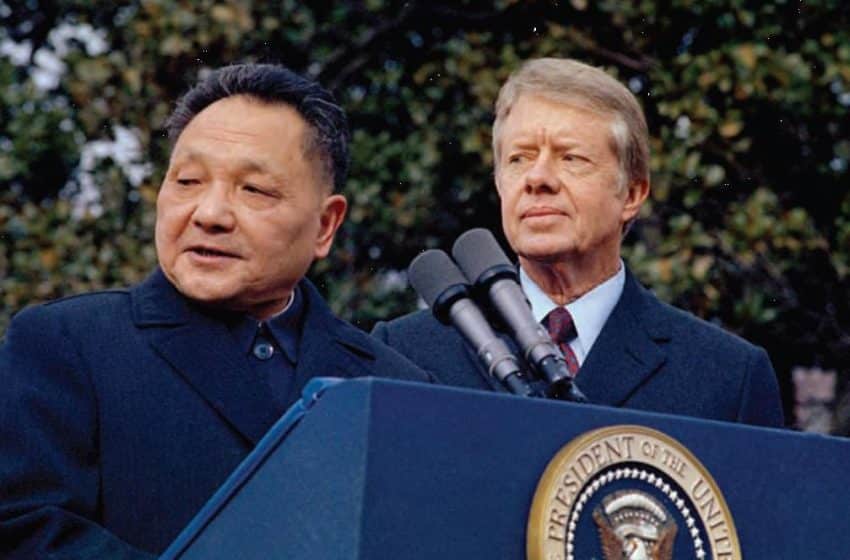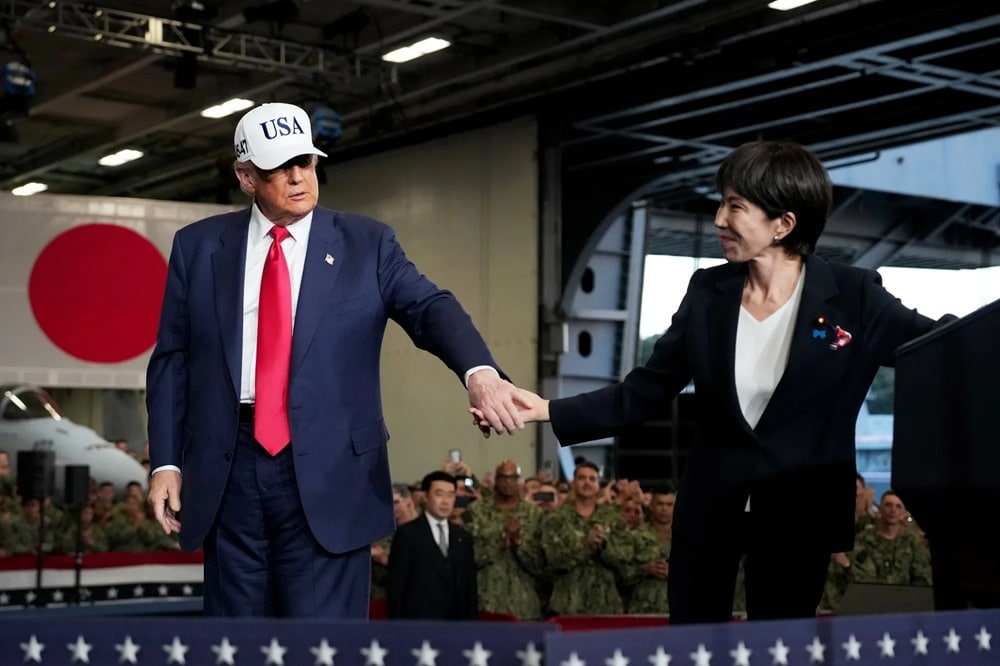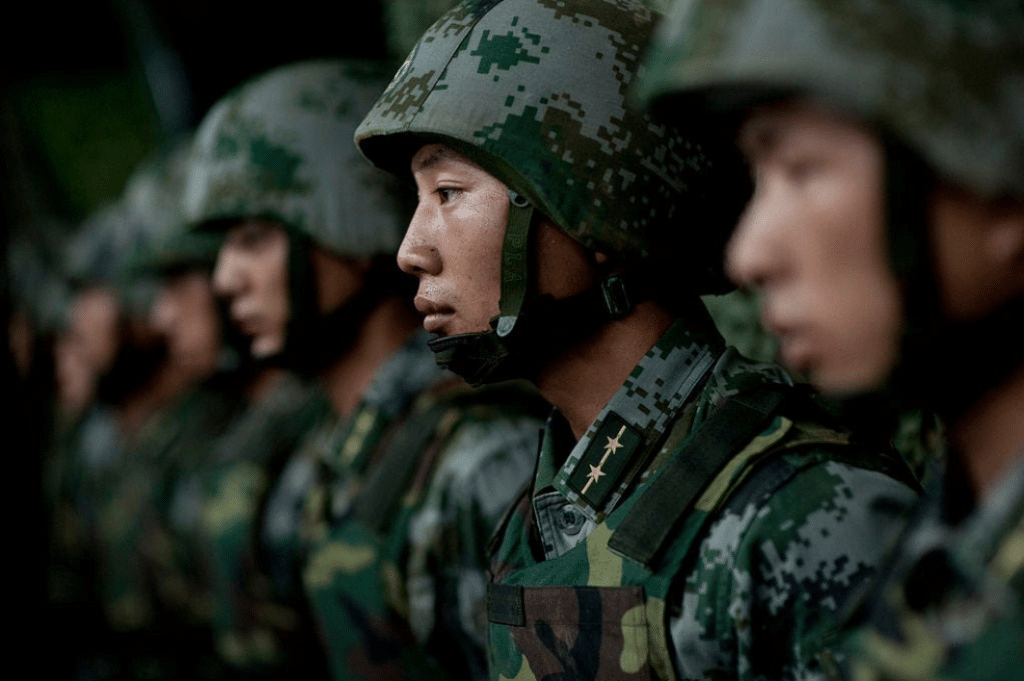What Should the Other Side Do?
- Analysis
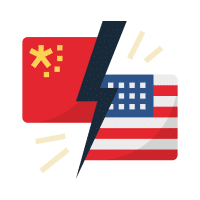 LIU Weidong
LIU Weidong  SHI Peipei
SHI Peipei  WANG Jun
WANG Jun- 02/13/2025
- 0
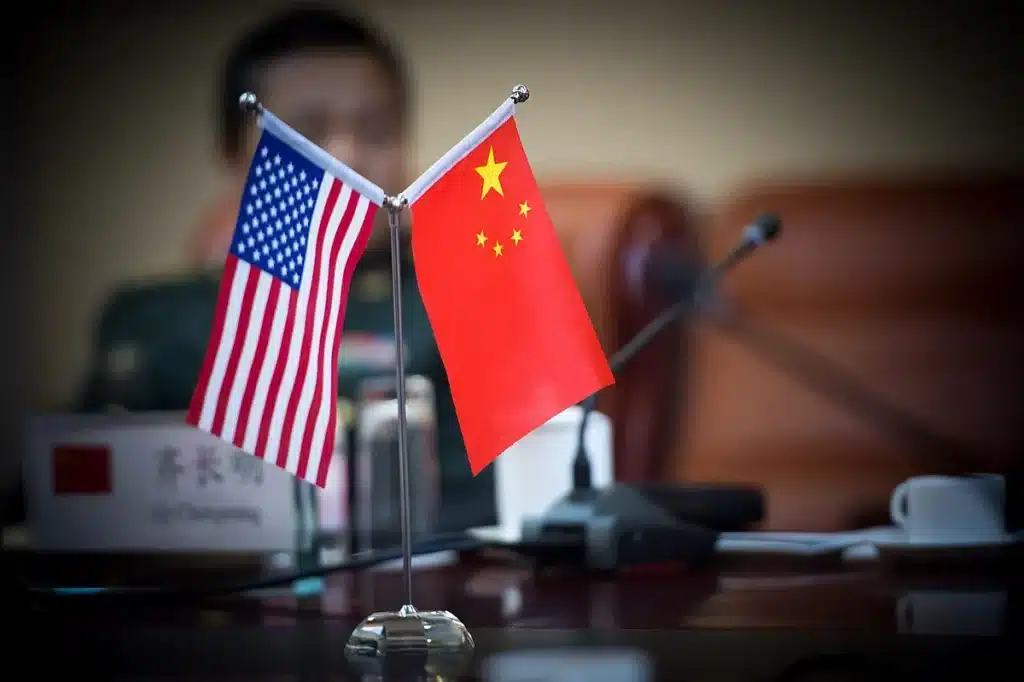
The U.S.-China relationship is the most consequential bilateral relationship in the world. How it is managed will have a huge impact on not only the well-being of the two nations but also global peace and prosperity. The nature of this relationship began to change drastically in the waning years of the Obama Administration. President Trump’s decision to wage a trade war on China in 2018 and the outbreak of the pandemic in early 2020 had catapulted the bilateral relationship into one of hostility, acrimony, and even mutual fear. President Biden tried to manage the bilateral competition responsibly but was not able to put it on a relatively strong footing until November 2023. Before both American and Chinese leaders were able to implement the so-called San Francisco vision, Trump was elected again. It is fair to say both President Trump and President Xi Jinping have learned a few lessons from their interaction during the first Trump administration, when the relationship was the rockiest since normalization in 1979. And it is also fair to say it is a huge mistake to assume the inevitability of the collision between their respective plans to make their countries great again. Is there a way for the two countries to do their uttermost to protect their own core interests while finding common ground to peacefully and productively co-exist? It is with this goal that researchers from the Institute of American Studies, Chinese Academy of Social Sciences and veteran American researchers and former managers of U.S.-China relations who are regular contributors to U.S.-China Perception Monitor, began to brainstorm on how each country would like the other country to manage this volatile relationship. The following are their initial recommendations to each other. We hope these recommendations are useful to the decision-makers and their advisors on the bilateral relationship in Beijing and Washington, D.C.
Yawei Liu, Senior Advisor on China, The Carter Center
Suggestions for the U.S. Government from Chinese Scholars of the United States
U.S.-China relations are among the most important bilateral relationships in the world, a point on which both countries agree. To ensure the fundamental stability of this relationship, both governments must make proactive efforts. Chinese scholars suggest that the U.S. could consider the following approaches in its policy planning:
1. Make stabilizing U.S.-China relations a fundamental goal
Since 2018, the U.S. government has persistently pressured China, and China has responded to U.S. suppression, leading to an unprecedented low in U.S.-China relations. Hardliners in the U.S. advocate not only for sustained confrontation with China but also for outright victory in the competition, an irresponsible and unattainable goal. In Washington’s global vision, maintaining supremacy of the American leadership or achieving the goal of making America great again does not necessarily require defeating China. In fact, defeating China would not help the U.S. achieve these objectives. Regardless of the reasons that may cause China’s economic stagnation or social unrest, such outcomes would not benefit the U.S. or the international community. Stabilizing U.S.-China relations based on managed competition is the only viable option. Stable U.S.-China relations contribute to global stability, which in turn is conducive to the development of both countries. The Chinese government consistently adheres to the three principles of mutual respect, peaceful coexistence, and win-win cooperation for U.S.-China relations. While the U.S. government has not responded positively to these principles due to various considerations, maintaining stability in U.S.-China relations serves the fundamental interests of both sides. A lose-lose scenario is not a rational choice for either side. Engaging in constructive interaction, avoiding mutual depletion, and refraining from coercing other nations into choosing sides ultimately benefit both countries.
2. Promptly resolve U.S.-China strategic perception issues to reduce misjudgment
A fundamental, decisive, and overarching question is whether the U.S. and China are adversaries, partners, non-enemies but non-friends, or capable of mutual assistance. If either side views the other as its primary competitor, the greatest geopolitical challenge, or a constant threat, it will inevitably lead to flawed policies, mistaken actions, and adverse outcomes.
The U.S. government has labeled China a strategic competitor, but China has never sought to replace the U.S. as a superpower, undermine its foundations globally, or engage in worldwide containment as the U.S. has done. China is not an aggressive country, and Taiwan is the only target for which mainland China has not renounced the option of military unification, because Taiwan is a part of China. This is a stance that has remained consistent since the founding of the People’s Republic of China.
As for the U.S. branding China as a “revisionist” state, this claim is unconvincing. In fact, China is the biggest beneficiary of the current international system, and is committed to upholding the post-war international order, staunchly supporting the free trade system, providing an increasing number of public goods to the international community, building infrastructure in underdeveloped regions, offering food aid, forgiving debt, and deploying the largest peacekeeping forces in conflict zones.
China has not sought to change the U.S.; it is the U.S. that has persistently sought to change China. China is not the Soviet Union—this is something even the most hardline American politicians agree on. The U.S. needs to eliminate its inaccurate strategic perceptions of China. Even if the two countries cannot be friends, they should avoid becoming adversaries or enemies. Above all, they must refrain from imposing labels on each other that could lead to self-fulfilling prophecies.
3. Respect each other’s core national interests
The Chinese government has repeatedly stated that China is committed to building a stable, healthy, and sustainable U.S.-China relationship. At the same time, China has interests it must safeguard, principles it must uphold, and bottom lines it cannot afford other nations to cross. As two major powers, the U.S. and China will inevitably have disagreements, but these must not harm each other’s core interests.
China has outlined four red lines: The Taiwan question, democracy and human rights, China’s path and system, and China’s development right. These serve as the most important guardrails and safety nets in U.S.-China relations. Only by respecting each other’s core interests can the conditions for cooperation be created and the opportunity to maintain bilateral stability be secured.
The U.S., of course, also has its own core national interests and can clearly articulate its red lines, just as China has done. At present, there is no fundamental conflict in each other’s respective red lines, which means both nations can respect each other’s core interests.
To achieve this, both sides must enhance communication through various channels, clearly articulate their core interests, and honestly discuss efforts that can be made to address these interests. Disagreements should be handled based on the principle of “harmony without uniformity,” striving to find mutually acceptable solutions that consider the needs and interests of both parties.
4. Accelerate practical cooperation between the United States and China
In the current context of U.S.-China relations, actively pursuing cooperation is crucial for stabilizing bilateral ties. Cooperation between the U.S. and China is a win-win endeavor, promoting shared development rather than merely enhancing one side’s competitiveness.
The two countries share extensive common interests across various domains, including traditional sectors like trade and agriculture, as well as emerging areas such as climate change and artificial intelligence. In the current situation, these common interests have not diminished but increased.
Both sides should fully utilize existing mechanisms in diplomacy, economics, finance, commerce, and agriculture, or establish new ones where necessary, to promote cooperation in areas such as illicit drug trafficking control, law enforcement, artificial intelligence, and green development.
Even in high-level political domains, there is potential for collaboration between the U.S. and China. Topics such as the Russia-Ukraine conflict, the Israel-Palestine conflict, non-proliferation, Northeast Asian security, humanitarian aid, combating piracy, and ensuring the safety of maritime navigation remain areas where the two countries can cooperate extensively.
In global infrastructure development, the U.S. and China each have unique strengths. Combining these advantages could not only set an example of win-win cooperation but also significantly reduce the cost of assisting developing countries in their progress, thereby indirectly fostering global peace and stability. While U.S.-China relations may not return to their past state, there is an opportunity for a future characterized by cooperation rather than confrontation.
5. Facilitate communication and exchanges between the two peoples
Although official U.S.-China relations are currently at a low point, this does not hinder the development of people-to-people relations between the two nations. In fact, these people-to-people relations can play a crucial role in supporting official ties, ensuring the two countries avoid descending into a new Cold War, which neither side wants to see.
Improving people-to-people relations is essential for reducing misjudgment, enhancing mutual understanding, mitigating nationalist sentiments within each country, and promoting economic and cultural cooperation.
The U.S. government, together with China, can encourage and support increased interactions and communication between their people. Efforts could include increasing the number of flights between the two countries, fostering tourism cooperation, expanding local exchanges, strengthening educational ties—particularly among young people—and enhancing collaboration on issues related to persons with disabilities.
Additionally, efforts should be made to reduce barriers to cultural and social exchanges, such as lifting visa restrictions, halting harassment of visiting individuals, and eliminating man-made induced “chilling effects.”
6. Proactively address domestic issues without shifting blame
Both the U.S. and China face significant domestic challenges. The causes of these challenges are complex, stemming from the bottlenecks of existing development models, the political and economic imbalances brought about by technological revolutions, and the domestic manifestations of global issues.
Regardless of the specifics, it is essential to recognize that these problems are primarily rooted in domestic factors, and blaming the other party is both irresponsible and ineffective in solving the issues.
The U.S. and China should each take responsibility, striving to enhance their economic development and social equity. Addressing their domestic issues head-on, rather than scapegoating the other or stoking nationalist sentiments, will contribute to the stability of U.S.-China relations and serve as a significant contribution to global peace and development.
Suggestions for the Chinese Government from American Scholars of China
1. Pursue personal diplomacy and reduce volatility in the bilateral relationship
One of the hallmarks of Xi Jinping’s interaction with American leaders is to establish personal rapport with the American presidents. It began with President Obama in the summer of 2013 in Sunnyland outside Los Angeles. Since then, they met each other at least once a year. After Trump became the President, Xi flew to Florida in April 2017 and stayed with Trump for two days. President Trump then visited China in November 2017. This heads-of-state diplomacy was interrupted by the COVID-19 pandemic until President Xi met President Bident at a summit in Bali, Indonesia in November 2022. This was followed by two meetings, November 2023 and November 2024 respectively in San Francisco and Lima, Peru. It is clear this personal diplomacy between the top leaders of the United States and China was the most effective and successful.
Since the 2024 election, Trump has once again demonstrated his inclination to build a relationship with President Xi. He told NBC reporter Kristen Welker that he had communicated with Xi after the election and extended an invitation to Xi to attend his inauguration. President Trump’s positive signals of building a productive relationship should be reciprocated as early as possible.
For a summit to take place as soon as possible, it may require early meetings between members of the national security team for President Trump and their counterparts in China. The Chinese government should reach out to them soon after inauguration, particularly Mr. Michael Walz, President Trump’s national security advisor, who does not need Senate confirmation. There is a consensus in D.C. that during the Biden administration, the Jake Sullivan channel (regular meetings between Sullivan and his counterparts) contributed to the effective management of the volatile relationship. Chinese government media and social media outlets should refrain from launching personal attacks on members of President Trump’s national security team. Recent Chinese reports of what Minister Wang Yi said Secretary of State Marco Rubio during their first call is not conducive to regular frank and objective communications between the two sides.
While trying to establish open communication channels, the Chinese government should not overreact to Trump’s initial policies, which will be put in place to demonstrate his foreign policy strength domestically. President Trump began imposing a 10% tariff on Chinese goods that have been subject to both Trump and Biden tariffs because China has not done a god job in curtailing precursor chemicals for making fentanyl from flowing into Mexico and preventing Chinese from illegally entering the United States. If possible, the Chinese government should not retaliate immediately. The Chinese government is entitled to quick counteroffensive and it has but tit-for-tat tactics may hurt long-term Chinese interests.
2. Find ways for acceptable economic co-existence
Foreign businesses feel shut out of the China market by initiatives like Made-in-China 2025. This must be addressed. China is justified in pushing back against sanctions and export controls, but it must nonetheless show it is willing to share the benefits of globalization with the foreign business community. It must embrace the mobility of labor and capital and the protections of intellectual property rights.
U.S. businesses still face longstanding regulatory and industry-specific barriers to market access in China. When President Trump launched the trade war against China in 2018, many U.S. businesses openly called the measures unreasonable and counterproductive. During the second Trump term, these businesses are most likely to remain silent. China should end discriminatory industrial policies and subsidies, open government and SOE procurement to foreign companies more fully and strengthen intellectual property protections. China should also uphold its commitment to importing US goods agreed up on the US-China Phase One Agreement. China should work to increase domestic consumption by implementing structural reforms recommended in the IMF Article IV consultation report with the goal of increasing the social safety net, scaling back industrial policies and subsidies, and addressing non-performing loans.
If possible, China should engage the Trump administration to negotiate in good faith an agreement similar to the Phase One Agreement designed to sustainably resolve the trade imbalance between the two countries. Considering how substantial the American trade deficit is, it is understandable if China appears to make more concessions to Washington. There is the need for the Chinese government to engage its public about how to create a mutually beneficial trade relationship.
Negotiators from both countries can also collectively address the investment issue. It is fair for both countries to issue negative lists of what areas are prohibited from investment from the other side. China should demand the United States be more transparent on what Chinese manufacturing sections are permitted to invest in America.
Finally, Chinese overcapacity is not an artificial issue invented by the American government to contain China’s rights to development. Like the trade imbalance, this issue requires both sides to adopt a data-driven approach to measure the real situation and figure out a way for China’s capacity to manufacture solar panels, batteries, and EVs not to stifle domestic enterprises in the United States and contribute to the joint endeavor to arrest climate change.
3. Address American concerns seriously
Both governments have grave concerns about the decisions, policies and behaviors against the other side. In his November 2024 meeting with President Biden, President Xi has identified four red lines that the new Trump administration cannot cross. While it is easy to understand Taiwan and export control/entity list (development rights) as red lines, it is clearly difficult for American to have a full grasp of the other two red lines: democracy and human rights and China’s path and system. American decision makers need to know what will constitute the crossing of these red lines and what China’s countermeasures will be.
At the same time, China needs to signal first and then adopt real measures to address American concerns.
Chinese government should stop cyberattacks on American commercial entities such as recent Salt Typhoon and infrastructure targets.
Chinese government should allow all Americans who are subject to exit ban imposed without due process to leave China.
Chinese government should adopt policies that will eventually allow American social media apps and websites to be online in China.
U.S. government cannot force China to change policies regarding its ethnic minorities, but Chinese government should allow American reporters, government officials and ordinary citizens to visit Xinjiang and Tibet without any restrictions so that facts can be presented by them to their fellow Americans.
Publicize China’s sincere and serious efforts to stop fentanyl precursor chemicals from reaching Mexico.
Agree to receive illegal immigrants from China that are deported by the U.S. government. China has begun to do so, which will go a long way in addressing current difficulties in the bilateral relationship.
4. Take necessary steps to facilitate meaningful people-to-people and academic exchange
President Xi’s announcement last year to bring 50,000 young Americans to China in five years is laudable. Improving people-to-people diplomacy is an essential component in preventing further deterioration in U.S.-China relations. However, there are several steps that must be taken to make China an attractive destination for American students seeking study abroad opportunities.
First, the Chinese government should allow foreign journalists to live and work in China with few obstacles. Currently, many Western journalists reporting on China do so from places like Taipei and Singapore. The result is that they have very little access to sources inside China, and their reporting lacks the on-the-ground experiences that make good journalism compelling. Journalists still living inside China face many obstacles preventing them from publishing rich, nuanced accounts of what is happening in the major cities American students would visit on a study abroad trip. The difficulties journalists face reporting on China not only hurts China by limiting global understanding, it also makes China less attractive to students and, more importantly, parents who have considerable say in where their young adult children spend a summer, semester, or year abroad.
Second, American scholars studying China should be given increased access to archives and opportunities for social scientific research. The incredible progress in improving American understanding of Chinese history, society, and politics during the 2000s, which was the result of mutually beneficial collaboration between American and Chinese scholars, is at risk of being lost due to censorship of archival sources and lack of access to Chinese society for social scientific researchers. Without these sources, there are vanishing incentives for Americans to pursue careers researching China, which, in turn, means fewer college and university faculty in the United States to promote travel to and study in Chinese universities.
Third, the Chinese government should work with the U.S. government to restore programs like the Fulbright U.S. Student Program and the Critical Language Scholarship. The Fulbright Program, suspended by the Trump administration in 2020, was a valuable resource for mutual exchange between Chinese and American researchers since its establishment in 1979. It allowed participants from both countries to live and study in their counterpart’s society and culture, providing deep mutual understanding. While the number of total participants was not large, many American participants have gone on to pursue careers related to their knowledge of Chinese society. Although the Critical Language Scholarship continues to offer Chinese language courses abroad, these are now held in Taiwan. The home-stay and linguistic immersion approaches of the Critical Language Scholarship mean its undergraduate participants leave the program with life changing experiences of their host country funded by the U.S. government. The Chinese government should not waste the opportunity of allowing the U.S. government to fund such experiences in smaller cities like Dalian, a prior Critical Language Scholarship site. Working toward restoring these programs would be an important symbolic step toward restoring cultural and educational exchange and would great help in providing Americans interested in China with a rich, nuanced experience of its society and culture.
Fourth, Chinese government should consider lifting blocks of popular U.S. social media applications so that young Americans visiting China can quickly and easily report their experience to their family members and friends.
5. Deescalate tension over Taiwan by communicating a commitment to peaceful unification with no deadlines
China should take clear steps to demonstrate it is committed to peaceful resolution of the Taiwan issue while making clear to the United States that Taiwan is a war or peace issue. China’s top leader must make repeated statements that there is no deadline for resolving the Taiwan issue and that China is committed to resolving the issue peacefully. China should indicate a willingness to reduce the number of missile deployments and the frequency of military exercises around Taiwan if the United States is willing to reaffirm its commitment to the One China Policy. Beijing should neutralize Taiwan as a source of strategic competition with the United States by rejecting the notion that the island is essential for American or Chinese security posture. Beijing should stop resisting engaging in extensive, substantive crisis prevention and management dialogues with the United States at track 1 and 2 levels. Thomas Friedman, the New York Times columnist, recently visited China and called for the United States and China to negotiate a new Shanghai Communique. While Americans leaders may be reluctant to conduct such negotiations, the Chinese diplomats at all levels should discussion this possibility with their American counterparts and make clear what issues they are willing to discuss to demonstrate sincerity and readiness for mutual concessions.
6. Be specific on where to initiate cooperation with Washington on multilateral issues
From the Chinese perspective, there are three pillars for the stabilization of the bilateral relationship: mutual respect, peaceful coexistence and win-win cooperation. Bilateral cooperation can be the cornerstone for mutual respect that will lay the foundation for peaceful coexistence. There has been very little trust among the managers of the bilateral relationship for a long time. Recent zero-sum rivalry, provocative incidents involving both sides, American laws designed to punish China for its alleged violation of human rights and China’s refusal to condemn the Russian invasion of Ukraine have almost destroyed all channels of communication let alone coordinating each other’s decisions that will impact global peace and development. However, when the two countries did cooperate, in the case of joint efforts to contain Ebola in West Africa, collective pressure to persuade South Sudan fighting forces to agree to a ceasefire, close coordination in getting Iran to freeze nuclear weapons programs and cooperative endeavor to force DPRK to denuclearize all led to results that could not be accomplished easily by one nation alone. Chinese government has been talking about win-win cooperation for a long time but at no time has it made it specific where Washington and Beijing can in fact cooperate or coordinate their policies to make this world more peaceful and create conducive conditions for sustained development. In the coming months, it will be great if Beijing can assess each major regional conflict in the world and hold sincere discussions with Washington on where it believes the two countries can work closely to resolve it.
President Trump would like to see a ceasefire between Moscow and Kiev and believes China can play a very meaningful role in reaching this goal. Will China consider playing a role?
China offered facilitation in the summits between President Trump and Kim Jung-un in 2018 in an effort to denuclearize the Korean Peninsula. Could China begin discussion with Washington on this thorny issue?
China has close relationship with major players in the Middle East. Can China work with the United States and lend its influence to achieve a peaceful transition in Syria?
China has major stake in securing peace and stability in Ethiopia and Sudan, two major African nations whose civil conflicts have catastrophic impact on their people and economic development. Is China willing to coordinate its policies with Washington to this end?
China was a convener of meetings between the Taliban and U.S. diplomats during Trump’s first term. The U.S. has disengaged from Afghanistan but likes to see a more open and tolerant government in place so its years of engagement and investment in nation-building does not go down the drain. Can China share what it is doing and what it will do in Afghanistan and invite input from Washington?
Both Washington and Beijing have engaged Africa in enabling the continent to have better public health systems, infrastructure construction and good governance. This is the most potential area where Washington and Beijing can compliment each other’s aid efforts but the Chinese and American aid decision makers have rarely shared information since 2017. (This recommendation has become irrelevant now as the Trump Administration is on track to dismantle USAID.)
There are many other areas where the United States and China can share information and tear up the walls of secrecy in responding to regional conflicts and development challenges. But it takes two to tango. No such cooperation is possible if Washington remains indifferent to China’s effort to achieve win-win cooperation. If this is the case, then Beijing can fairly and squarely blame the U.S. at not playing ball.
The views expressed in this article represent those of the author(s) and not those of The Carter Center.

